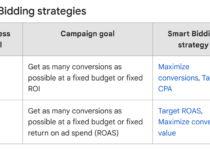Video advertising for a changing automotive market
Video is a potent marketing and advertising tool for auto dealers — and wielding it strategically can open new avenues for meeting shoppers across evolving platforms and spaces. If you’re serious about reaching in-market audiences and getting them in the door of your dealership, you need a variety of video content tailored for different formats and purposes.
Connecting your vehicle inventory with today’s digital-first shoppers starts with knowing who your audiences are and where you can reach them.
Step 1: Define your video strategy with audience data
Buying a car looks different today than it used to. This is especially true for younger demographics, who are more likely to browse websites and read online reviews than to fill out forms or dial a dealership’s phone number. When audiences change, advertisers have to adopt new tactics. Today, dealers are using powerful digital tools to unveil market and audience data and build out full-funnel video marketing strategies.
Our team uses MarketAI, our proprietary machine learning-powered software, to leverage a combination of data points that help us steer goals and strategies. Real-time dealership inventory and market data from across the country help us understand buying trends. Our ads are then prioritized based on a vehicle’s live demand, resulting in the most efficient campaigns possible. In addition to market insights, we can also leverage a combination of first party and third-party audience data to target the right user at the right time, while showing them the inventory that is most relevant to them.
Once you’ve identified your best opportunities, you can start considering the video content itself.
Step 2: Choose your video types and platforms
You have options when it comes to the channels and tactics you’re using for your video content. Should videos be long or short? Vertical or horizontal? User-generated and authentic, or polished and professional? The answers depend on your audience and goals, but they also depend on the content you’re able to source or produce.
The video types we recommend to our automotive clients fall into two main categories: traditional video ads (CTV or Online Video) and short form video content.
1) Traditional Video Ads (CTV or Online Video)
Traditionally, automotive advertising has used professionally produced videos in a horizontal (or landscape-oriented) format, created primarily for TV advertising. We can create these ads quickly and easily using brand templates, making them a safe choice for following OEM compliance guidelines and submitting for reimbursement.
These videos work well for most paid ad placements. Adpearance uses demand-side platforms (DSPs) that provide access to hundreds of different inventory placements on Connected TV (CTV) streaming networks like Hulu, Peacock and YouTube, as well as other “horizontal” ad placements on websites and social media platforms.
These placements are dynamic, using audience targeting data to serve ads to the right watchers at the right times. They’re also trackable. Using an impression pixel and user-specific IDs, we can follow in-market buyers across their customer journeys and attribute leads back to the campaign.
2) Short Form Video Content
Another avenue for video content is short form video content. These videos are typically filmed directly on a mobile device in a vertical format, and content tends to feel personal and unrehearsed. You might show off new inventory, offer up quick tips for first-time buyers, or follow team members behind the scenes as they set up for a special event.
Entire mobile apps (such as TikTok) are fueled by user-generated short-form video, and other platforms like Meta and YouTube embrace the format in features like Reels, Stories and Shorts. We encourage our clients to make use of these platforms and formats as much as possible, especially to reach their local audiences. They’re a perfect way to share tips and tricks, insider knowledge, and local insights, and to connect on a personal level with shoppers in your area. Dealers can post this content directly to their social media channels and then our team will boost the content using paid ad dollars.
Step 3: Stay flexible
Once you evaluate your audiences, goals and resources (and hopefully have some exciting content ideas bouncing around), there is one more recommendation: be ready to change and adapt your strategy.
As technology advances, broadcast TV is turning into CTV, and social media platforms are changing the way we view videos altogether. Current events also influence decision-making: the recent uncertainty about TikTok’s availability, for example, puts a microscope on the need to be both flexible and nimble.
Set your dealership up for success
One way to set your dealership up for success? Have a team that can help you out and back you up. Our video advertising experts offer customizable help at any stage — from optimizing content to placing ads — and we’d love to conduct a free audit for you. We’ll go through real-time sales data to compare your dealership against competitors and learn where you can increase your advertising efficiency to gain competitive market share.
Schedule your free digital analysis today to get started!


